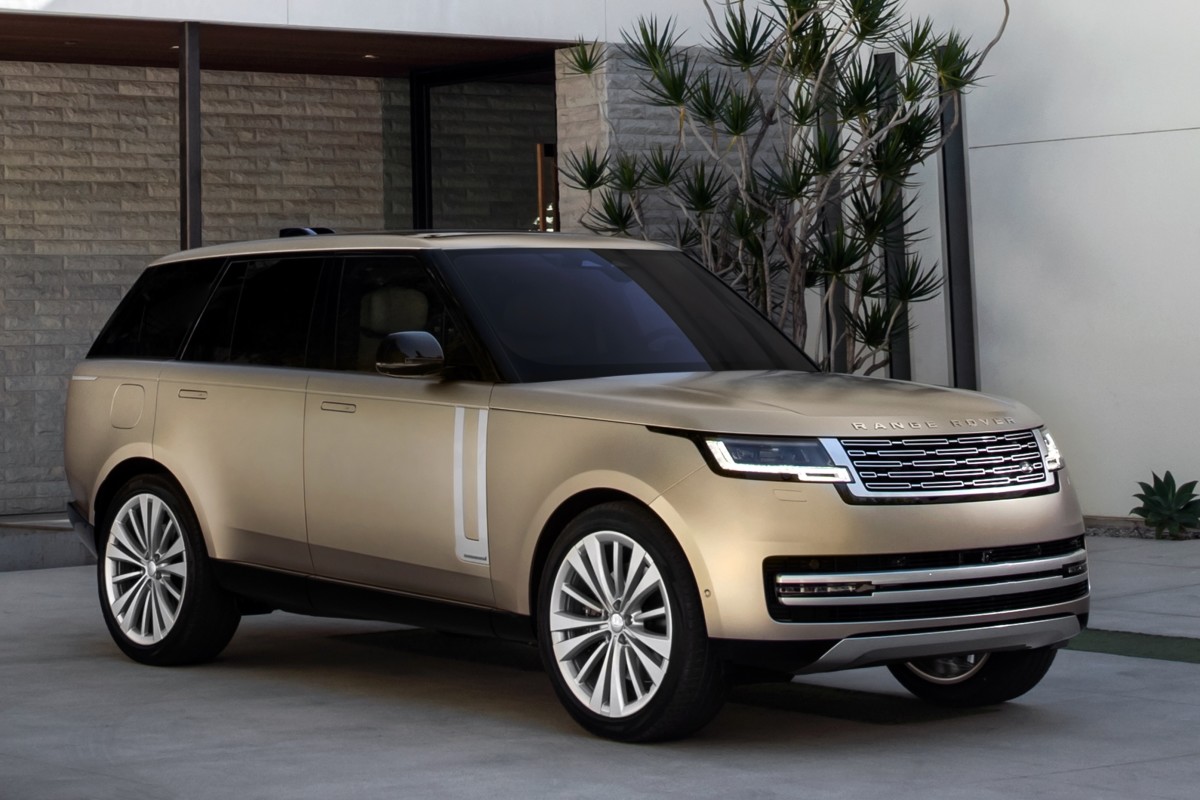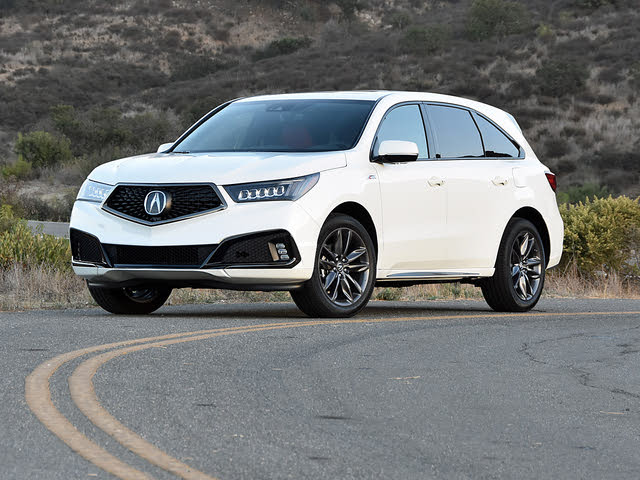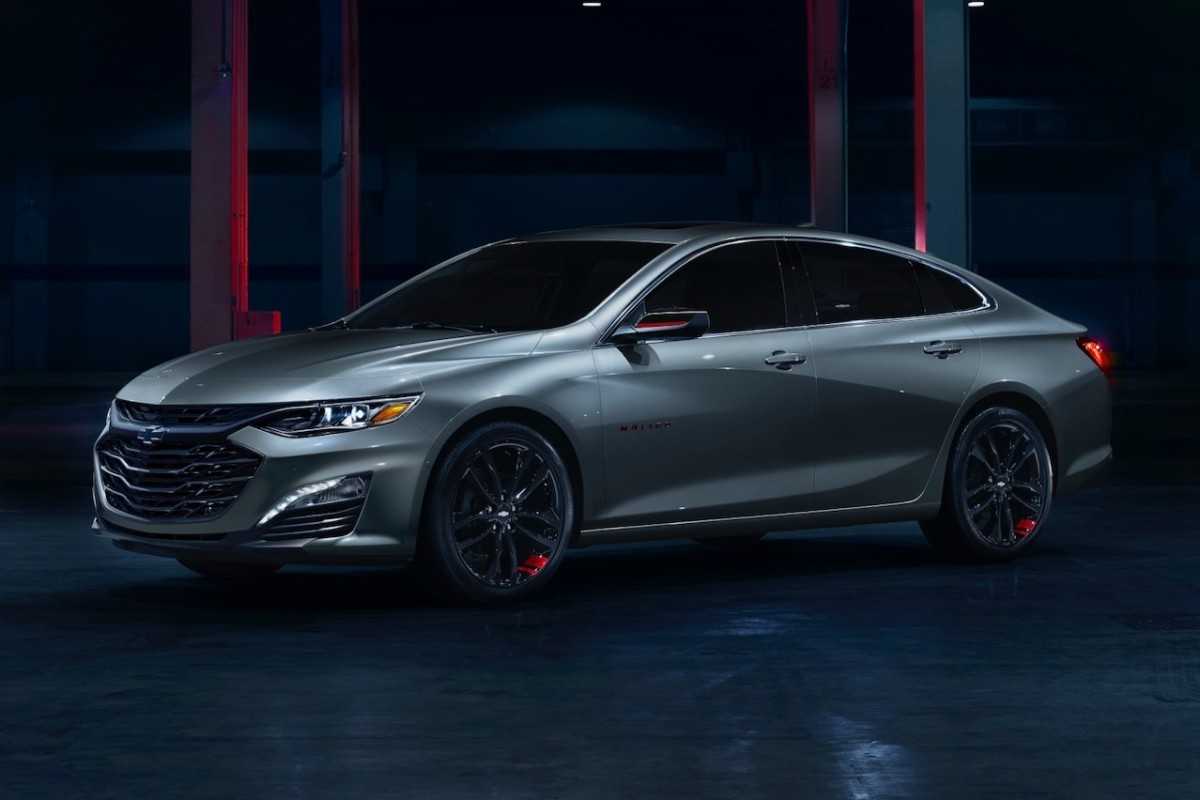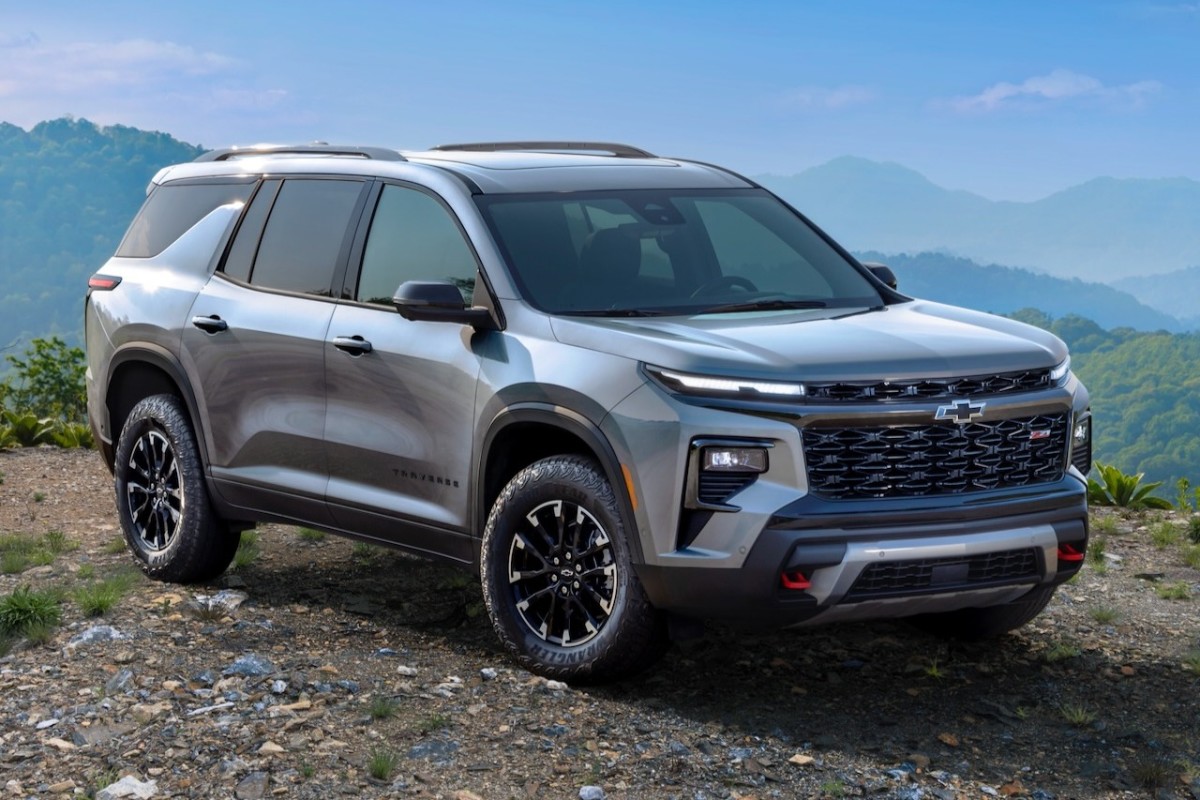Luxury SUV buyers expect the best, and why wouldn’t they? They want the latest technology, features, space, and performance without compromise, and are happy to shell out their hard-earned money on above-average MSRPs to get it. Not only that, but to look and feel their best—truly a core component of the luxury experience. Luckily, there are dozens of models to choose from, and several top-shelf automakers that can certainly help achieve this.
We’ve put together a list of some of the best luxury SUV options on the new car market, ranging from compact crossovers to big, brutish trucks. Sorry, no Fords, Hondas, or Toyotas here, but be sure to check out our other SUV guides that cover these brands at length.
A few of the options on this list are capable of venturing off-road, too. Serious off-roaders usually aren’t considered luxury vehicles, but for those who want that kind of experience, the Land Rover Defender, Lexus GX, and Jeep Grand Cherokee are also worth a look.
Whatever your priorities are, check out our rankings below to find a luxury SUV that best suits you before you schedule a test drive.
The Best Luxury SUVs of 2025
- BMW X1
- BMW X3
- Cadillac Escalade
- Genesis GV70
- Genesis GV80
- Land Rover Range Rover
- Mercedes-Benz GLB
- Mercedes-Benz GLE-Class
- Porsche Cayenne
- Volvo XC90
BMW X1
Redesigned for the 2023 model year, the BMW X1 now looks and feels a whole lot more like its bigger X3 sibling than it used to. Those upgrades were enough to catapult the X1 to the head of the class among entry-level luxury SUVs in several respects without appreciably raising its price, but for 2024, BMW has gone even further: This year sees the addition of the 312-horsepower X1 M35i. This new model marks the first time any kind of M label has graced the X1, and it answers the speedy Mercedes-AMG GLA35 and GLB35 models tit-for-tat.
With a starting price just north of $40,000, the 2024 X1 compares well in lots of areas with the Audi Q3, Mercedes-Benz GLA-Class, and Volvo XC40. It offers standard all-wheel drive (AWD) and a luxurious interior with more passenger room than all but the GLA, and more usable cargo space than any of the others. It also has the sporty, reactive feel you’d expect from a BMW. Some may prefer the Volvo’s luxurious smoothness, but others will appreciate the engaging dynamics of the X1. Its 2.0-liter turbocharged four-cylinder has slightly less power than the XC40 (241 horsepower to 247) but more torque than any of these competitors (295 pound-feet to Volvo and Mercedes’ 258). It’s a rewarding driving experience.
BMW has fitted the X1 with its new-generation “curved display” dashboard, with two pretty screens under a single pane of glass, and its latest operating system, iDrive 9. While the German automaker skimps a bit on standard driver-assist features (many are optional, much like in Audi and Mercedes-Benz offerings), the overall effect is high-tech, and there really are plenty of helpful in-car features, including a very accurate digital assistant. The M35i should only improve what is already a good package, though it is of course more expensive.
BMW X3
The BMW X3 is one of the best compact SUVs on the market today, consistently outpacing its rivals. It perfectly blends athleticism, utility, and a refined cabin. It also offers a wide variety of performance levels and models to choose from. At 67.1 cubic feet, its cargo space is near the top of the compact luxury SUV crowd. The front seats impress with their spaciousness, as does the second-row seating, though some alternatives like the Lexus NX do better here. Despite their performance mission, X3s also get very good gas mileage.
The downside is that the X3 has one of the higher starting prices in its segment, and the hottest performance trims get seriously expensive. The base 2024 X3 sDrive30i, with 248 horsepower and rear-wheel drive (RWD) isn’t too bad at around $48,000. The 382-hp AWD X3 M40i, however, rings in at $66,400, and the X3 M soars to more than $76,000, or even higher with the Competition package. On top of that, BMW charges extra for many nice features, like adaptive cruise control. But what you get is a top-notch performer that can keep up with SUVs like the Alfa Romeo Stelvio and Porsche Macan but also makes a better family machine than they do.
Also, for the X3’s higher price, shoppers are rewarded with plenty of content, including standard blind-spot monitoring and lane-departure warnings. The X3 comes equipped with a 10.25-inch touchscreen system that’s home to the intuitive iDrive infotainment system. It offers standard wireless Apple CarPlay and wireless Android Auto, and you can also select options such as a larger 12.3-inch screen, wireless device charging, and a head-up display.
Cadillac Escalade
The heavyweight champion of luxury SUVs since 1998, the giant Cadillac Escalade is still a luxury buyer favorite and tangible proof that you’re living large. There are, however, new players on the scene that have challenged Cadillac to up its game, chiefly the Jeep Grand Wagoneer. Still, the Escalade looks and feels more luxurious, has more cargo room, and now even offers a high-performance version, the Escalade V.
As in previous years, the current-generation Cadillac Escalade comes in two sizes, the massive regular-length version and the aircraft-carrier-sized ESV. The main differences are cargo and third-row legroom. The Grand Wagoneer has a slightly larger third row than the Escalade, but the ESV and Grand Wagoneer L are evenly matched back there, and even LeBron James won’t be cramped in either. The Cadillac, however, offers more cargo room than any full-size SUV (except the related GMC Yukon Denali) in both sizes.
While the Grand Wagoneer now offers a 510-hp straight-six engine, Escalade buyers can choose from a frugal 3.0-liter Turbodiesel (277 hp and 460 lb-ft of torque), a potent 6.2-liter V8 (420 hp and 460 lb-ft), or the new V, with a turbocharged 6.2 good for 682 hp and 653 lb-ft. Cadillac also offers loads of in-car entertainment and technology features and a comprehensive slate of safety systems, including the Super Cruise semi-autonomous driving system.
Genesis GV70
Introduced in 2022, the Genesis GV70 is still a newcomer to the compact luxury crossover segment, but it punches way above its weight in lots of areas. The sinuous styling is unmistakably athletic and backed by a cabin that looks like it took a page straight out of the Bentley Bentayga’s playbook. Both the GV70's turbocharged 2.5-liter four-cylinder (300 hp) and 3.5-liter twin-turbo V6 engines (375 hp) provide brisk performance, while the well-balanced chassis makes it almost as fun to drive as alternatives like the BMW X3 and Alfa Romeo Stelvio.
Inside, the GV70 is nearly as comfy as it is pretty to look at, with ample room for a family of four. There’s more rear seat room than the BMW X3, Lexus RX, or Lexus NX, but slightly less than the Acura RDX. Cargo room behind that rear seat is right near the top of the class, although the GV70 falls to mid-pack in overall volume thanks to its curvy shape. It’s full of nice tech features, too, and while things like a bigger instrument cluster and a panoramic sunroof are optional, even the standard vehicle comes well-equipped.
This, of course, is part of Genesis’ appeal. The automaker includes many driver-assist systems and other features that cost a little more in other brand’s luxury cars, though some things are still optional. It’s also backed by a longer warranty than any other luxury automaker offers: six years or 50,000 miles bumper-to-bumper and 10 years or 100,000 miles of powertrain coverage. The downside? The GV70 gets mediocre gas mileage with either engine. In 2023, Genesis also added an EV version, the Electrified GV70. Buy an electric GV70, and you get more power (up to 483 hp for ten seconds via the car's "Boost" button), more efficiency (up to 236 miles of all-electric range, courtesy of a 77.4-kWh battery), and fast, 800-volt charging. While the Electrified GV70 is the faster and greener option, it's also more expensive, with a starting MSRP of around $68,000.
Genesis GV80
Luxury SUVs all carry a premium, but if you can avoid buying just based on the badge, the Genesis GV80 offers compelling looks, dynamics, and substance at a bargain price. It’s the largest SUV in the Genesis lineup and the most luxurious, showing just how far the brand has evolved since being spun off from Hyundai less than a decade ago. The GV80 is a midsize luxury SUV with seating for five or seven in a pinch, with a tight optional third-row seat. It can also tow up to 6,000 pounds, a very good number by midsize crossover SUV standards.
The GV80 comes with the same 2.5-liter four-cylinder and twin-turbo 3.5-liter V6 engines seen in the GV70, though they have more weight to pull here. AWD is standard. The turbo-four is the more efficient option, returning 20 mpg city, 24 highway, and 22 combined. This is only so-so compared to rivals like the BMW X5 and Audi Q5, and fuel economy is probably this SUV’s weak point. Still, both powertrains make for smooth, confident acceleration. The ride is comfortable and refined, without being overly numb.
The artful and modern cabin includes features such as heated front seats, a heated steering wheel, wireless device charging, dual-zone climate control, and an intuitive infotainment system with wireless Apple CarPlay and Android Auto. This is just the tip of the iceberg for the list of standard tech and safety features found in the GV80. For the 2025 model year (starting in the spring of 2024), Genesis has also added a sleek GV80 Coupe that directly takes on the BMW X6 and Mercedes-Benz GLE Coupe, only with more style and equipment baked in.
Land Rover Range Rover
Jeep has often branded the popular Grand Cherokee as the “American Range Rover,” and the new Wagoneer brand only further contributes to that idea. But then there’s, you know, the actual Range Rover. It’s big and imposing, has tons of interior space, and boasts a cabin that rivals the Bentley Bentayga for opulence (we’ve tried them both). While many owners buy Range Rovers for luxury bona fides and style, the SUV also still has its world-renowned off-road capabilities, and it isn’t afraid of the rough stuff. The Range Rover’s air suspension provides a smooth ride and also raises and lowers based on road conditions.
The Range Rover comes equipped with a fully digital instrument panel and dual digital central touchscreens. It’s also available in standard- and extended-wheelbase models. The latter has incredible second-row legroom, and trims like the SV Autobiography offer opulent reclining second-row seats. In 2023, the standard-wheelbase model got a 3.0-liter inline six-cylinder plug-in hybrid (PHEV) powertrain that provides up to 48 miles of electric-only driving, the 434-hp P440e, but for 2024, that drivetrain has been replaced with the 542-hp P550e, now with 51 miles of electric range.
Other Range Rover powerplant options include the 3.0-liter P400 inline six (395 hp), the 4.4-liter V8 P530 (523 hp), and the V8 P615 (606 hp), all backed by an eight-speed automatic transmission. Though they’re meant for luxury work, they’re also brawny, with a maximum tow rating of 8,200 pounds. It’s pricey, of course, with all versions costing six figures and the long-wheelbase versions ranging well north of $200,000, but few SUVs in the world rival the Range Rover's combination of performance, opulence, and versatility. If you like the style but want more emphasis on performance, the related Range Rover Sport is calling your name.
Mercedes-Benz GLB
Created as a halfway point between the tiny GLA-Class and the compact GLC-Class, the Mercedes-Benz GLB-Class uses the same FWD platform as the little GLA but looks like a tiny version of the automaker’s big GLS. Because of its boxy, upright shape, it has lots of space for its size, and it even offers a tiny optional third row. Compact three-row SUVs are rare for a reason, and Mercedes-Benz puts a warning label on three-row GLBs to indicate that those seats are, like Trix, strictly for persons under five-foot-six.
Price-wise, the GLB 250 costs $3,000 less than the GLC to start, but it’s roughly the same size and also uses a 2.0-liter turbocharged four-cylinder engine. So what’s the difference? The GLB feels less opulent inside but has a whole lot more usable space. Its engine makes 221 hp and drives the front wheels, with AWD optional, while the GLC retains Mercedes-Benz’s traditional rear-drive layout (with AWD also optional). The GLB’s handling is a bit more athletic though, since it weighs less. For those who want to go fast, there’s also the 302-hp Mercedes-AMG GLB35, but while it’s much quicker, the ride is also much harsher.
GLBs get much of Mercedes’ most modern technology, and there are more standard features for 2024, including a big 10.25-inch infotainment screen and heated steering wheel. The best driver-assist gear and AWD still cost extra, but that’s also true of other Benzes. The big draws here are space and the optional third row. Without the third row, cargo space and rear legroom are huge for an SUV of this size. Add it, and you get the flexibility of bringing two more tikes with you, but there’s almost no cargo room if you use it. Still, the GLB offers lots of practicality and value.
Mercedes-Benz GLE
With a design facelift and a new PHEV variant, the Mercedes-Benz GLE-Class is a stronger option than ever. It offers a very traditional Mercedes-Benz luxury experience and build quality, with fine materials including real leather and wood, plus ample tech features. Modern Mercedes-Benz interiors are top-notch, and the GLE is no exception. The capable MBUX infotainment system runs on two pretty screens and has a useful digital assistant. There are two rows of roomy seats and an optional third row, though it’s tiny like the GLB’s.
The GLE combines gentle ride quality with responsive handling, but Mercedes-Benz also offers many different levels of performance. The base GLE 350 uses a 255-hp 2.0-liter turbocharged four-cylinder, while the GLE 450 gets a 375-hp 3.0-liter inline six. The new GLE 450e PHEV mates the 2.0-liter four with electric motors for 381 hp and excellent economy, though we still don’t know its electric driving range as of this writing. The GLE 580 uses a twin-turbo 510-hp 4.0-liter V8, but there are two AMG models beyond that, the 429-hp AMG GLE53 and the monster AMG GLE 63S, with 603 hp.
AMG GLEs are more vigorous in lots of ways, and they also offer a second body style, a fastback “Coupe” that competes with the BMW X6 and Audi Q8. Most buyers, however, will stick with the more serene GLEs, and of those, the GLE 450 and PHEV GLE 450e (both starting at $69,500 for 2024) are probably the best combination of luxury, power, and value in the lineup. Just in case you want to tow, the GLE has you covered there, too, with a 7,700-pound rating.
Porsche Cayenne
Porsche purists might have scoffed when Stuttgart introduced the Cayenne two decades ago, but buyers did not. The SUV’s unusual recipe of luxury, sleek styling, uncompromising performance, and family-friendliness routinely made it the company’s best-selling model. For 2024, the entire Cayenne lineup got a visual refresh, and just about every model gets a bump in power, but the Turbo S SUV now comes only with PHEV power. Coupe and traditional SUV body styles remain. Porsche doesn’t offer a third row, but buyers looking for this level of enthusiasm in a bigger package might want to check out the BMW X7.
Porsche hasn’t really changed the overall look on the outside, but the many screens are new, as is a stubby toggle switch shifter that seems lifted from the Audi A3. Rear-seat legroom and cargo space lag behind some other midsize SUVs, but in fine Porsche tradition, few rivals can match the Cayenne's performance. There are many drivetrains, from a 348-hp 3.0-liter turbocharged inline-six to the 512-hp Cayenne S E-Hybrid PHEV through to the 729-hp Cayenne Turbo E-Hybrid PHEV, which can rocket to 60 mph in 3.5 seconds. The plug-in Cayennes get bigger batteries this year and more electric range, up to 25 miles for the S.
While the Cayenne’s cabin is subdued and workmanlike rather than opulent, it’s very comfortable and swathed in fine materials. As on other Porsche models, the customization choices are also nearly endless. For a price, you can have your Cayenne painted to a custom color, have custom-color seat belts, choose from 27 different wheel designs, and personalize many other things. The downside, other than the Cayenne’s only-okay fuel economy, is cost. It's pricey to begin with, and ordering its best features, or even features that are standard on some competitors, balloons the bill even further.
Volvo XC90
On sale since 2016, the second-generation Volvo XC90 is technically one of the older vehicles in its class, but it looks and feels contemporary. That’s largely because the Swedish automaker keeps updating it, now with a 2025-model-year redesign. A family-friendly three-row with a sublimely luxurious interior, the XC90 still looks like it came from the pages of Architectural Digest. It also earns top marks for safety, picking up a 2024 IIHS Top Safety Pick+.
Volvo offers three powertrains in the XC90, but all use 2.0-liter four-cylinder engines. The turbocharged B5 and optional turbo-and-supercharged B6 powerplants use 48-volt mild-hybrid assistance for 247 and 295 hp. Performance and fuel economy are decent, not outstanding, but the XC90 is a quiet, refined driver. The T8 powertrain in the XC90 PHEV mates the B6 engine with a beefier electric motor and an 18.8-kWh battery pack, for 455 hp and 33 miles of electric range. The T8 is much faster than the B6, doing zero to 60 mph in 4.5 seconds, but it also has an MSRP north of $70,000.
Inside, the XC90 has lots of room in its first two rows and an ample third row, with 31.9 inches of legroom. Cargo space is a little less remarkable with only 12.6 cubic feet (and just 11.2 in the PHEV) when the third row is in place. Fold it down, and space rises to a closer-to-average 35.6 (34.1 in the PHEV). Volvo offers plenty of tech features and a recently-improved, Google-based Infotainment system. Plus, it comes with many more standard safety features than alternatives like the Audi Q7, like adaptive cruise control. If the XC90 is a bit too pricey, the Acura MDX may also be a good alternative.













